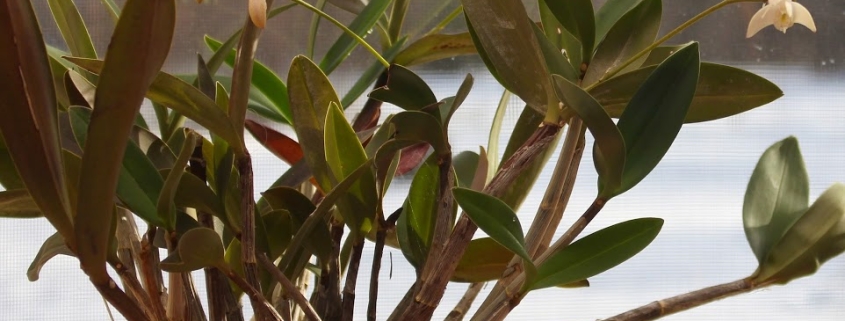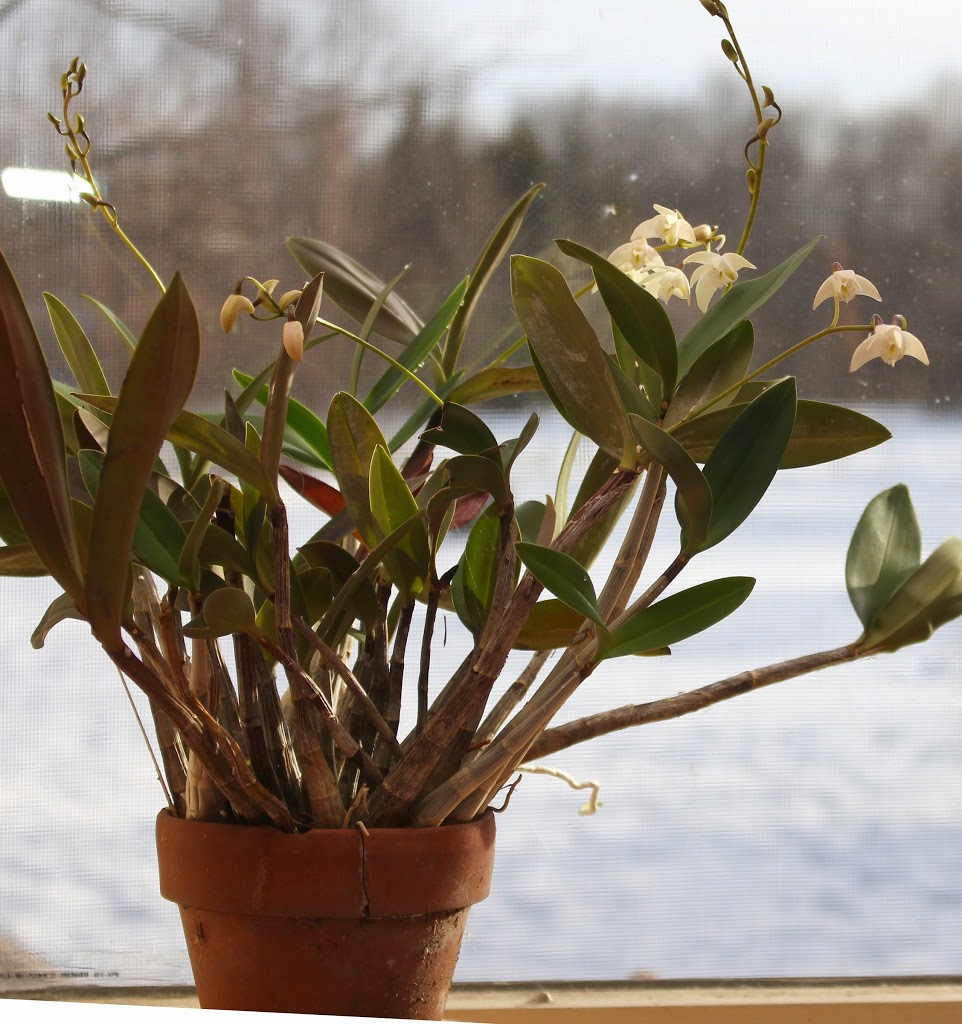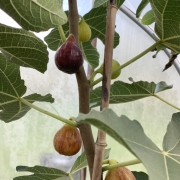Of Orchids and Oil
Over the past few weeks, excitement was steadily mounting on the windowsill. First came the stalk that poked up from the bases of whorls of leathery leaves. Then, buds started fattening up along the stalks. Finally, after a half a decade of growing Dendrobium kingianum, the pink rock orchid, it looked like the plant might finally reward me with some blossoms. Which it did, a couple of days ago.
The actual blossoming was somewhat anticlimactic. No flamboyant shapes or colors, just small, white blossoms. And no particularly green thumb was required to get this orchid to blossom, just time.
Pink rock orchid is known to be a tough plant. While many orchids are native to lush, tropical jungles, the conditions of which are hard to even approach, indoors except in a hothouse, this orchid is native to rocky environments of Australia. It tolerates cold below freezing and hot temperatures over 100°F., and does not demand an inordinate amount of light. I water whenever the potting mix seems dry.
The problem is that “orchid flowering” conjures up both a greater challenge and blossoms more spectacular than are offered by pink rock orchid. So I’m now just going to look upon it as an attractive houseplant with an attractive flower. It even has a pleasant, slight scent.
—————————————–
I’ve waxed enthusiastic about the handfuls of ripe figs I gather up in late summer and into fall from my greenhouse. And about heads of lettuce and mâche, celery stalks, and sprigs of parsley that fill salad bowls all winter. Yet all is not always so Eden-like within the greenhouse. Last year scale insects began to attack a couple of fig trees. Innocuous-looking, small bumps on the bark — dormant scale insects — threaten to wake up in a larger outbreak this year. Action is needed. Now.
Last year at this time my weapon was an old toothbrush and a solution of soapy water. The brute force method of scrubbing the insects from the bark was effective — to a point — but tedious.
This year I’m smothering the buggers. My weapon of choice is oil, not any old oil but a specially refined oil that minimizes damage to plants while leaving insects gasping for air. It also contains an emulsifier so it readily mixes with water. Spray oil comes in two “flavors:” dormant oil and summer oil. Plants are more likely to be damaged by oil when they are in leaf and growing, so summer oils are more refined; summer oils mixed at higher concentrations can be used as dormant oils. (Summer oils are also called “horticultural oils,” “stylet oils,” or “ultrafine oils.”)
Oil sprays have been around for a long time — commercially for over a hundred years — and have the advantages of causing little harm to beneficial organisms and being relatively safe for birds, humans, and other mammals. Insects and mites (which oils also control) have little likelihood of developing resistance to oil sprays. The oils might be petroleum-, plant-, or fish-based.
So what’s not to like about oil sprays? Most importantly, they can damage plants. To avoid damage, sprays must be applied when temperatures are above freezing but not too, too hot, say above 90°F. Also, some plants, such as Japanese maple, redbud, azalea, hibiscus, and sugar maple, are readily damaged by oil; and oil will strip the blue, waxy coating from Colorado blue spruce, turning the needles green. The longer any plant is coated with oil, the more chance for damage; low humidity hastens its evaporation.
Spray oils work by direct contact, which is advantageous unless you have a pest whose eggs are resistant to oil and keep hatching over time. Or if the pest flies in from elsewhere. Many gardeners routinely spray their fruit trees in spring with oil, with little effect because the most significant pests of fruit trees generally do not hang out on the stems or fruits for long enough for a direct hit by an oil spray.
————————————————-
Back to the fig trees in my greenhouse. They’re getting weekly sprays of dormant strength summer oil until the leaves begin to unfold. Once that happens, I may mix up a batch of summer strength oil. The goal is to reduce populations drastically because, despite the innocuousness of oil sprays, I’d rather not spray anything once fruits begin to develop.
My other tack to keep scale insects at bay is to wrap the trunk with a band of masking tape coated with sticky Tangletrap, providing a Maginot line to stop ants from climbing the trees. (Hopefully, more effective than the real Maginot line.) Ants enjoy the sweet honeydew exuded by the scale insects and, in return, herd them, protecting them from predators.
Spraying and banding may seem like a lot of effort. But fresh figs are worth it. And with snow still on the ground, there’s not that much else to do, gardenwise, yet this time of year.









This reminds me that I must treat my currants for currant aphids. Penn Extension says “Dormant sprays are effective, as are summer horticultural oil or insecticidal soap if applied when the aphids are first seen.” Do you have to treat for currant aphids, and if so, what works for you? Timing in my garden is about the same as yours, I’m right across the river.
I often get aphids on my currants but environmental conditions or predators seem to get rid of them soon after they appear. Just a little cosmetic damage on the leaves. So, no, I don’t sprays my currants.
I’ve tried the wait and see method, with severe damage to some varieties. The ants are farming the aphids, the lady bugs are feasting & I’ve found their eggs, but the ant/aphid team wins.
A blast of water will also set back the aphids sufficiently.
Our local library made up a display of gardening books for spring, and published a photo in the County paper. I asked why none of your books were represented. It seems all of your books are checked out!
Nice! (The library needs more copies of my books.)